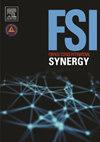虐待婴儿摇晃中三联征的病理生理假说:一个系统的回顾和确证病例的分析
Q1 Social Sciences
引用次数: 0
摘要
硬膜下出血、视网膜出血和脑病与虐待性头部创伤的医学诊断有关。这些发现也被观察到在儿童暴露于承认或目击摇晃。这些发现背后有各种各样的机制。一种机制是故意摇晃所独有的,而另一种机制则与故意和意外暴力以及潜在疾病兼容。我们进行了一个系统的文献综述的病例报告的发现,随后分析了三个机制假设的经验结果:(1)结果组成部分独立出现在振动过程中的加速-减速力;(2)震动损伤脑干或颈脊髓引起缺氧后,结果成分部分依赖病理生理介质引起;(3)慢性硬膜下血肿的预后因素部分依赖,主要由摇晃引起的再出血引起。从总共9628篇文章中,我们确定了12篇出版物,包括总共100例病例,符合纳入标准。我们没有发现足够详细的病例报告,但有9例病例的信息允许对假设进行初步检验。三个病例的发现与三联征部分依赖并与慢性硬膜下再出血有关(假设3)一致,而没有病例支持其他假设。因此,已发表的病例并没有提供必要的信息来理解婴儿遭受摇晃的三联征发现的机制。本文章由计算机程序翻译,如有差异,请以英文原文为准。
Pathophysiological hypotheses of the triad in abusive infant shaking: A systematic review and analysis of corroborated cases
Subdural hemorrhage, retinal hemorrhages, and encephalopathy are associated with the medical diagnosis of abusive head trauma. These findings have also been observed in children exposed to admitted or witnessed shaking. There are various suggested mechanisms behind these findings. One mechanism is exclusive to intentional shaking, while the other suggested mechanisms are compatible with both intentional and accidental violence as well as an underlying illness.
We performed a systematic literature review of case reports on triad findings with subsequent analysis on the empirical consequences of three mechanistic hypotheses: (1) the outcome components arise independently following acceleration-deceleration forces during shaking; (2) the outcome components are partially dependent and caused by pathophysiological mediators following hypoxia caused by damage to the brainstem or cervical spinal cord by shaking; (3) the outcome factors are partially dependent and are caused by re-bleeding triggered by shaking in chronic subdural hematoma.
From a total of 9628 articles, we identified twelve publications including in total 100 cases that met the inclusion criteria. We identified no sufficiently detailed case report, but nine cases had information that allowed for tentative testing of the hypotheses. Three cases had findings consistent with that triad findings are partially dependent and related to chronic subdural re-bleeding (hypothesis 3), whereas no case provided support for the other hypotheses. Thus, published cases do not provide the information needed to understand the mechanism underlying triad findings in infants subjected to shaking.
求助全文
通过发布文献求助,成功后即可免费获取论文全文。
去求助
来源期刊

Forensic Science International: Synergy
Social Sciences-Law
CiteScore
4.90
自引率
0.00%
发文量
75
审稿时长
90 days
 求助内容:
求助内容: 应助结果提醒方式:
应助结果提醒方式:


